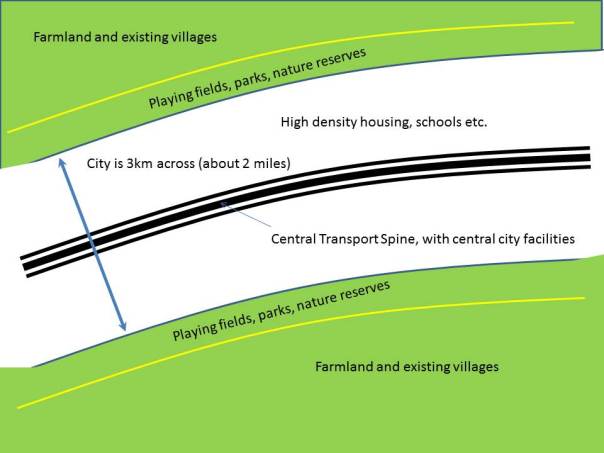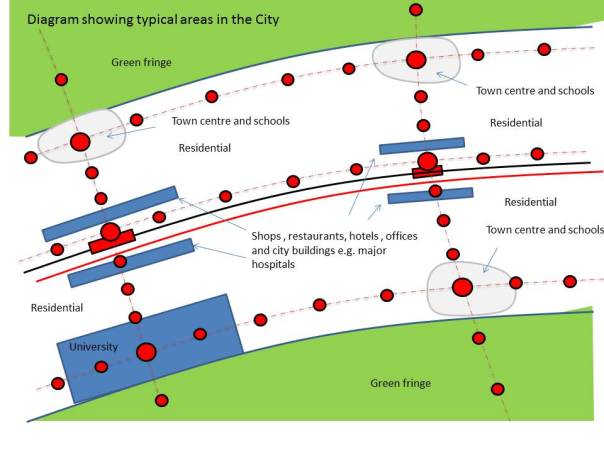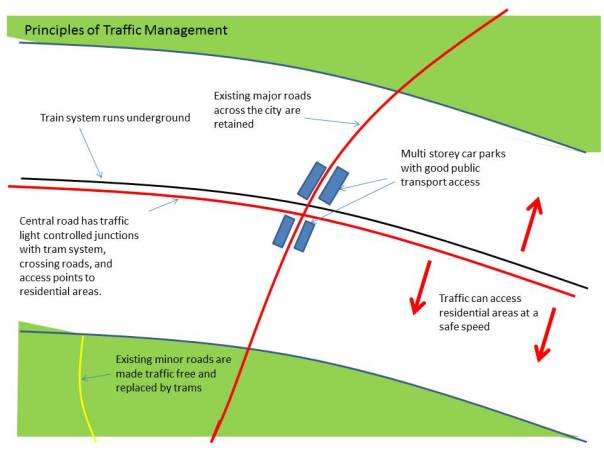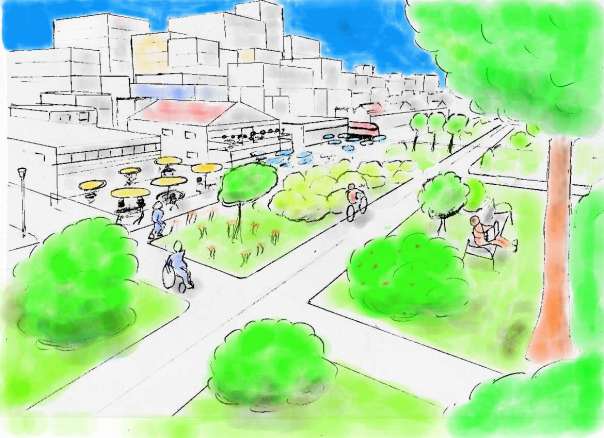This post is about electric bikes. They work by helping with the effort of pedalling. Hills are no longer a problem because little effort is required. They can play a big part in a green future. I apologise for the picture. It seems very hard to draw a bike and rider, and I don’t think I’ve found the best way of colouring it using PAINT.net. Any advice is welcome.
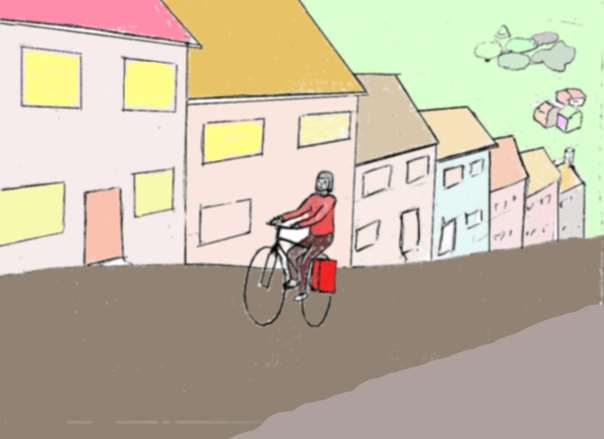
It is 2050. Pete is a young professional who lives at the top of a hill. The local town, including the shops, the railway, and the restaurants are at the bottom. After shopping in the town he loads his beer into the panniers, and cycles easily home up the hill. When he gets home he isn’t even sweating.
He isn’t sweating because the electric bike helped him up the hill, but it didn’t need much energy to do that. The energy used to go uphill depends on the weight of a vehicle. His body, bike and groceries weigh under 100 kg. A car weighs over 10 times as much. His round trip therefore consumed less than a tenth of the energy used by a car, and since that small amount of energy can be easily obtained from carbon free sources his carbon emissions are effectively zero.
Pete knows all this and so do his friends. He cycles because they would look down on him if he didn’t. It is uncool to emit carbon without good reason. He loves being seen around on his bike.
Pete also uses the bike because it is quicker. He lives a mile (1.6 kilometres) from the shops. His bike will do that distance in around 5 minutes. A car would do the actual journey a little quicker, but he would have to mess around finding a car parking space and might have to park away from the shops.
Isn’t it cool to bike now? Only with the right gear and with a carbon fibre bike. That sort of thing is fine as recreation but not if you are cycling with a purpose – to go to the shops, to the pub, or the gym. The time required to put the kit on is too great, the kit looks odd in a supermarket, and the bike is too costly to leave around.
We need to make it cool to just get on a simple bike and go, wearing normal clothes. The bike needs space to carry stuff. The gear needs to be practical. It shouldn’t be necessary to have a shower when you get home. The coolness needs to attach to the fact that such a journey protects the planet and is less hazardous to others than a car.
There are some other factors to overcome if bike use is to spread, notably fear of traffic. Councils can therefore help. 20 mph limits are bike friendly because cars overtake less often and more slowly. Junctions need to be designed to be safe for bikes. Road layouts need to ensure that drivers, cyclists and pedestrians can exist in harmony.
Most of all maybe we need a publicity campaign. Celebrities need to be seen cycling on ordinary bikes in everyday clothes. Adverts need to show people how to use an everyday bike – how to carry shopping, how to make sure the bike isn’t stolen. Most of all we need people to understand how much carbon is emitted by cars, and that it is socially unacceptable for a healthy person to use a car when there are low energy alternatives.

